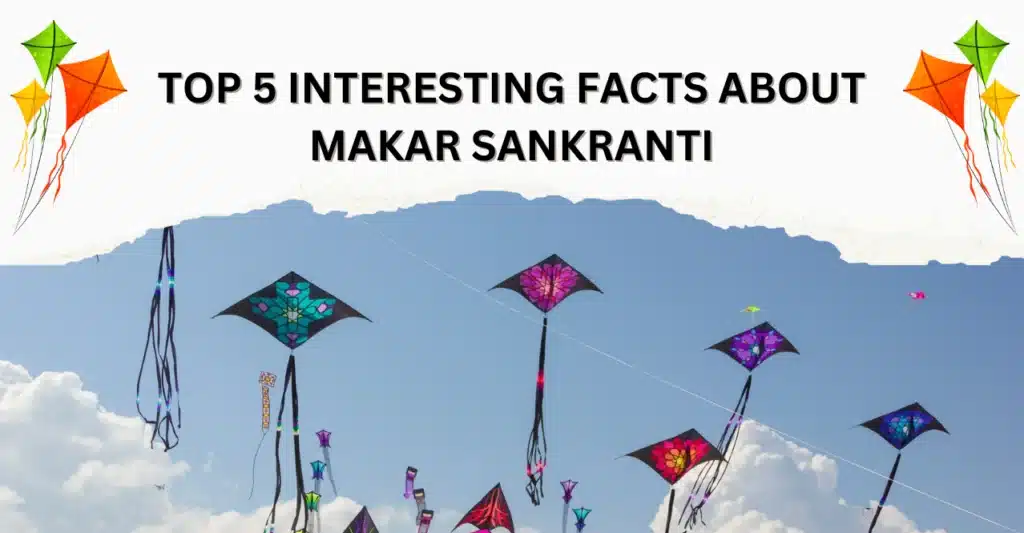Makar Sankranti is a vibrant and joyous festival celebrated across India, marking the transition of the Sun into the zodiac sign of Capricorn. This auspicious occasion is not just about flying kites and indulging in sweet treats; it holds deep cultural and spiritual significance. In this blog post, we’ll explore five intriguing facts about Makar Sankranti that will enrich your understanding of this beloved festival.
Realted: Top 10 Donation Ideas for Makar Sankranti
Top 5 interesting facts about Makar Sankranti
Let’s look at some of the top 5 interesting facts about Makar Sankranti shared by educators from Dr. Kishore’s Ratnam Schools after thorough research.
1. Historical and Cultural Significance:
2. Astronomical Importance:
The timing of Makar Sankranti holds astronomical significance. It marks the Sun’s transition into the zodiac sign of Capricorn, known as ‘Makara’ in Sanskrit. This celestial event symbolizes the beginning of longer, warmer days, heralding the arrival of spring. The festival falls on January 14th or 15th every year, depending on the Hindu calendar, and is celebrated with great enthusiasm and fervor.
3. Rituals and Traditions:
Makar Sankranti is synonymous with colorful kites adorning the sky, but there’s more to the festivities than just kite flying. People wake up before dawn to take a holy dip in rivers, lakes, and sacred water bodies, offering prayers to the Sun God. The day is also marked by the exchange of sweets made from jaggery and sesame, symbolizing the sweetness and warmth of relationships. Additionally, donating food, clothes, and other essentials to the less fortunate is a common practice during Makar Sankranti, reflecting the spirit of giving and compassion.
4. Regional Diversity:
One of the most fascinating aspects of Makar Sankranti is its regional diversity. Each state in India celebrates the festival in its unique way, showcasing the country’s rich cultural heritage. In Gujarat, the festival is synonymous with the International Kite Festival, where enthusiasts from around the world gather to showcase their kite-flying skills. In Assam, it’s celebrated as ‘Magh Bihu,’ marked by traditional dances, feasting, and community gatherings. Similarly, in Karnataka, it’s known as ‘Uttarayana,’ featuring elaborate rangoli designs and special dishes prepared for the occasion.
5. Symbolism and Spirituality:
Makar Sankranti is not just a harvest festival; it’s a time for spiritual reflection and renewal. The Sun, considered the symbol of life and vitality, takes center stage during this auspicious day. It’s a reminder of the cyclical nature of life, where endings pave the way for new beginnings. The festival encourages individuals to embrace change, let go of the past, and welcome the promise of a brighter future. It instills a sense of optimism, resilience, and hope, making it more than just a festival—it’s a celebration of life itself.
What are some traditional dishes prepared during Makar Sankranti, and what do they symbolize?
During Makar Sankranti, several traditional dishes hold special significance and are prepared with great enthusiasm. One such dish is “Tilgul,” a sweet made from sesame seeds and jaggery. Tilgul symbolizes the importance of unity and the sweetness of relationships, as people exchange these sweets while saying, “Tilgul ghya, god god bola” which translates to “Take this tilgul and speak sweetly.”
Another popular dish is “Pongal,” a savory rice dish prepared with lentils, rice, and spices, mainly celebrated in South India. Pongal signifies abundance and prosperity, as it’s made using freshly harvested grains and ingredients. These traditional dishes are not only delicious but also carry deep cultural and symbolic meanings, adding to the richness of Makar Sankranti celebrations.
How Dr. Kishore’s Ratnam Schools Promote Cultural Diversity:
Dr. Kishore’s Ratnam Schools in Nellore stand as a trademark of educational excellence, embracing cultural diversity with open arms. With a commitment to fostering a rich tapestry of traditions, these schools celebrate Makar Sankranti along with several other festivals with gusto, uniting students from varied backgrounds. Dr. Kishore’s Ratnam Schools not only impart knowledge but also cultivate an environment where every cultural nuance is respected and cherished. Through vibrant festivities and inclusive curriculum, they instill a sense of unity and understanding among students, making education a truly enriching experience.
Conclusion:
Makar Sankranti is a festival that encapsulates the rich tapestry of Indian culture, heritage, and spirituality. From its historical significance to its diverse celebrations, there’s much to learn and appreciate about this joyous occasion. By understanding the facts and traditions associated with Makar Sankranti, we can deepen our connection to our roots and embrace the spirit of unity, gratitude, and joy that defines this auspicious festival.


